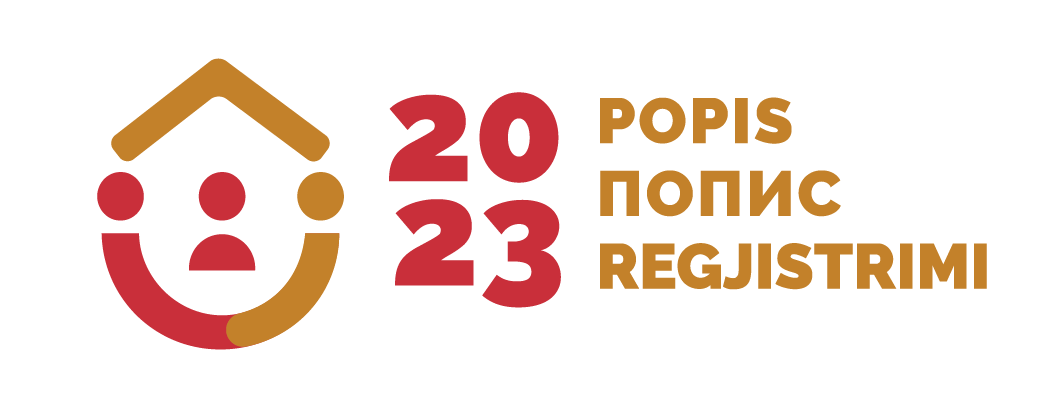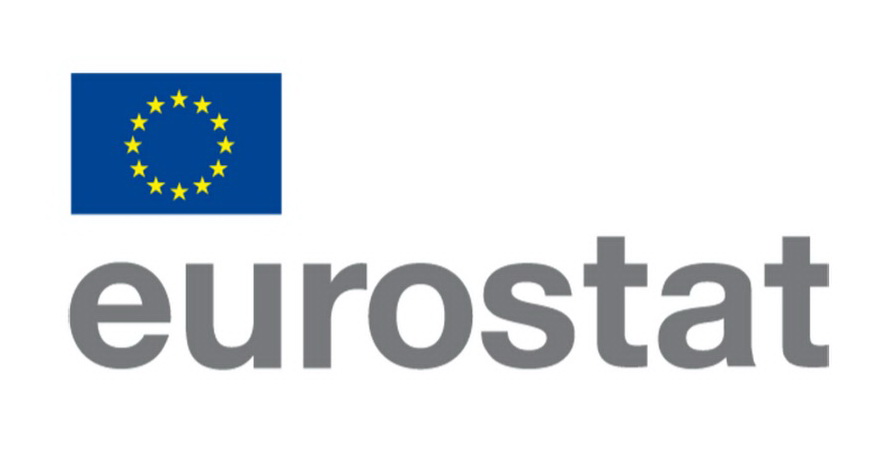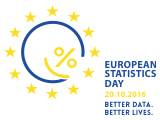| Category: | Economic statistics |
| Area: | Prices |
| Survey / data collection: | Purchasing Power Parities (PPP) |
| MONSTAT metadata |
|---|
| Reference metadata |
| 1. Contact |
| 2. Metadata update |
| 3. Statistical presentation |
| 4. Unit of measure |
| 5. Reference period |
| 6. Institutional mandate |
| 7. Confidentiality |
| 8. Release policy |
| 9. Frequency of dissemination |
| 10. Accessibility and clarity |
| 11. Quality management |
| 12. Relevance |
| 13. Accuracy and reliability |
| 14. Timeliness and punctuality |
| 15. Coherence and Comparability |
| 17. Data revision |
| 18. Statistical processing |
| 19. Comment |
Note: For any question on metadata, please contact MONSTAT metadata support.
| 1. Contact Vrh | |
| 1.1. Contact organization: | Statistical Office of Montenegro - MONSTAT |
| 1.2. Contact organization unit: | Department for price statistics and foreign trade |
| 1.2. Contact organization unit: | IV Proleterske 2, 81000 Podgorica, Montenegro |
| 2. Metadata update Top | |
| 2.1. Metadata last certified: | 18 December 2023 |
| 2.2. Metadata last posted: | 29 December 2023 |
| 2.3. Metadata last update: | 18 December 2023 |
| 3. Statistical presentation Top | |
| 3.1. Data description: | Purchasing Power Parity (PPP) is an efficient mean in the cross-country comparisons of gross domestic product. Since it also includes the price influence, this is the best indicator of economic situation in one country. Purchasing Power Parities (PPPs) are currency conversion rates that are applied in order to convert economic indicators from national currency to an artificial common currency - called the Purchasing Power Standard (PPS), which equalizes the purchasing power of different national currencies and enables meaningful volume comparison between countries. The greates impact on the GDP per capita measured by purchasing power standards, has the size of GDP estimated by expenditure method, the level of consumer prices and population. The Purchasing Power Standard (PPS) is an artificial currency unit that eliminates price level differences between countries. Thus one PPS buys the same volume of goods and services in all countries. This unit allows meaningful volume comparison of economic indicators across countries. |
| 3.2. Classification system: | PPPs are produced in accordance with the final expenditure classification of the European Standard of Accounts (ESA 2010). PPPs are classified by type of final expenditure - actual individual consumption expenditure (AIC), actual collective consumption expenditure and capital expenditure - and, in the case of actual individual consumption expenditure, by purchaser - households (HAICP), non-profit institutions serving households (NPISHs) and general government. The prices underlying the calculation of PPPs adhere to the definitions, concepts, classifications and accounting rules of ESA ''2010. |
| 3.3. Sector coverage: | PPPs are calculated for GDP and its various sub-aggregates on the expenditure side of national accounts. |
| 3.4. Statistical concepts and definitions: | Purchasing power parities (PPPs) are a means of converting national currencies into a common currency that equalizes the purchasing power of different national currencies. This means that a certain amount of national currency is converted into another common currency by purchasing power parity, corresponding to the amount needed to purchase the same basket of goods and services in all countries. In the simplest form, PPPs represent the ratio of the prices of certain products and services in national currencies between countries. Today we know that for the certain amount of money, for example, less goods can be bought, than we could buy for the same amount, month ago, of course, much less than a year or several years ago. Purchasing power of 1 euro is lower due to price increases. In other words, the same amount of purchasing power is reduced because the price level for the products and services we bought today, is higher than a few months, year or several years ago. In the simplest form, PPPs is the ratio of the prices of individual products and services in national currencies between countries |
| 3.5. Statistical unit: | PPPs are calculated for each of the participant countries in European comparison program, for EU as a whole, and for the euro area. |
| 3.6. Statistical population: | The expenditure side of national accounts, as defined in ESA 2010, defines the statistical population. |
| 3.7. Reference area: | Eurostat is in charge for annual calculation and dissemination of PPPs for 37 European countries. This includes the 27 EU member states, 3 EFTA countries (Iceland, Norway and Switzerland), United Kongdom, 5 candidate countries (Montenegro, Serbia, FYR Macedonia, Turkey, and Albania) and Bosnia and Herzegovina as a potential candidate. Each participating country collects a sufficient number of prices for each of the selected products and services, in order to ensure a reliable average price per product and service, taking into account the market structure in the country. Prices are collected in capital city in shops which are representative for a specific group of products and they represent national average prices. |
| 3.8. Time coverage: | PPPs and PLIs for Montenegro are available since 2005. |
| 3.9. Base period: | Not relevant. |
| 4. Unit of measure Top | |
| PPPs can be interpreted as the exchange rates of countries national currencies against the PPS. They express the number of currency units per PPS. Real expenditures are expenditures in national currency converted to PPS using PPPs. They are thus denominated in PPS. PLIs and volume indices per capita are indices that, in Eurostat's database, use EU28, EU27 or EU15 as "base country" (EU28=100, EU27=100 or EU15=100, depending on the user's choice). | |
| 5. Reference period Top | |
| The reference period is the calendar year. In the Eurostat database, data have been available since 1995, although not for all 37 countries. Data for Montenegro have been available since 2005. | |
| 6. Institutional mandate Top | |
| 6.1. Legal acts and other agreements: | The Law on Official Statistics and Official Statistical System (Official Gazette of Montenegro No 18/12 and 47/19) defines provisions for collection, processing, and dissemination of data. The Law provides to the Statistical Office legal powers to collect and access the data necessary for the implementation of Programme and Annual Plan. The Law gives a priority to the use of administrative data and right of access to individual data that are a result of survey of other official statistical producers. As an annex to legal provisions, Statistical Office has signed several memoranda on cooperation with administrative data providers. |
| 6.2. Data sharing: | Eurostat is responsible for calculation and publication of data, all the data that are included in the calculation of PPPs are available to the National Statistical Institutes (NSIs), but only for the purpose of validation. |
| 7. Confidentiality Top | |
| 7.1. Confidentiality - policy: | Articles 53-60 of the Law on Official Statistics and Official Statistical System (Official Gazette of Montenegro No 18/12 and 47/19) provide a framework for protection, use, and transmission of confidential data. Statistical office has produced two comprehensive rulebooks that cover the procedures for individual data protection as well as keeping individual records. With purpose of the meeting legal framework on functioning of security system and statistical confidentiality there was adopted the Rulebook on Keeping Statistical Data by which Manner, Time, Technical Conditions and Organization of Statistical Data Storage to Prevent Their Destroying, Misappropriation, and Unauthorized Use is Regulated as well as the Rulebook on Contents and Manner of Keeping Records on Users of Individual Statistical Data by which contents and manner of keeping records on users of individual statistical data is regular. Pursuant to the Article 59, an access to the confidential data is limited to persons performing duties and tasks of official statistical producer and up to the stage the data are necessary for official statistical production. Persons that performs duties and tasks within official statistical producers must sign the statement on respecting the principle of confidentiality. Law on Official Statistics and Official Statistical System is aligned with the Regulation No 223/2009 and the Regulation (EU) 2015/759 from 29 April 2015 that also regulate confidentiality provisions. The Government of Montenegro adopted the Statement on Commitment of Confidence in Official Statistics (Commitment of Confidence). |
| 7.2. Confidentiality - data treatment: | Employees of the Statistical Office of Montenegro sign confidentiality statements and legal actions are forseen for the intentional violation of the confidentiality of statistical data. Article 54 of the Law on Official Statistics and Official Statistical System (Official Gazette of Montenegro No 18 /12) stipulates that the data collected, processed, and stored for the purposes of official statistics are considered confidential, if it is possible, on the basis of these data, to directly or indirectly identify reporting units, thus reveal individual data. The reporting unit is directly identified by name, address, or by the assigned identification number. If the reporting units gave explicit consent for the use of specific data, that data shall not be considered confidential. |
| 8. Release policy Top | |
| 8.1. Release calendar: | The Law on Official Statistics and Official Statistical System (Official Gazette of Montenegro No 18/12) stipulates that official statistical producers prepare, update, and publish Statistical Release Calendar. It is published on the website of Statistical Office not later than 20 December for the next year, for all official statistical producers that includes date of releasing statistical data. Any change in date of releasing in the Calendar is published in advance in accordance with the Procedure on Unplanned Revisions. First estimates of PPPs and related indicators for the preceeding year are released in the form of a press release in June each year. In December, these indicators are recalculated for the three preceeding years. |
| 8.2. Release calendar - access: | Statistical Release Calendar is available on the following link: http://www.monstat.org/eng/page.php?id=12&pageid=12 |
| 8.3. User access: | General aim of official statistical producer is to meet the needs of users, and to make an access to statistical data to users in an understandable manner, simultaneously and under the same conditions. Statistical Office is obliged to produce and disseminate official statistics in objective, transparent and professional manner, so that all users are equally treated. |
| 9. Frequency of dissemination Top | |
| The data are published twice a year. | |
| 10. Accessibility and clarity Top | |
| 10.1. News release: | EUROSTAT publishes two annual releases in June and December each year: Gross Domestic Product and Actual Individual Consumption per capita in PPS and Price Level Indices for household final consumption expenditure. After official release by Eurostat, MONSTAT publishes a compilation of above mentioned press releases which are available at the following link: https://www.monstat.org/eng/page.php?id=1003&pageid=86 |
| 10.2. Publications: | All publications published by Statistical Office are available at the following link: https://www.monstat.org/eng/publikacije.php |
| 10.3. Online database: | Press releases published by Eurostat can be found on the website: http://ec.europa.eu/eurostat/web/purchasing-power-parities/publications/news-releases Press releases published by MONSTAT can be found on the website: http://monstat.org/userfiles/file/paritet%20kupovne%20moci/GDP%20in%20PPS_mne.pdf |
| 10.4. Micro-data access: | The Law on Official Statistics and Official Statistical System (Official Gazette of Montenegro No 18/12) regulates rules under which external users can obtain an access to individual data for needs of research. Article 58 defines types of scientific and research organizations that can obtain such data. Providing individual data without identifier is possible only upon a written request of scientific and research institutions, with purpose of performing scientific and research activities as well as international statistical organizations and statistical producers from other countries. Research entity signs the agreement with Statistical Office, and it signs the statement on respecting the confidentiality principle. Official statistical producers keeps a separate records on users and purpose of using the statistical data given to these users. |
| 10.5. Other: | Not relevant. |
| 10.6. Documentation on methodology: domain: | The latest version of the methodology "EUROSTAT-OECD Methodological manual on purchasing power parities" is available online: http://epp.eurostat.ec.europa.eu/portal/page/portal/product_details/publication?p_product_code=KS-BE-06-002 |
| 10.7. Quality documentation: | The Law on Official Statistics and the Official Statistical System ("Official Gazette of Montenegro" No. 18/12 and 47/19) defines the commitment to quality, which ensures that producers of official statistics in Montenegro work and cooperate in accordance with international principles of quality of the statistical system. In accordance with the ESS Quality Declaration, Article 338 of the Treaty on the Functioning of the EU, Regulations 759/2015 and 223/2009 and the European Statistics Code of Practice, the following documents are adopted: 1. Quality Strategy of the Statistical Office 2. Guide for the implementation of the Quality Strategy in the Statistical Office; 3. Implementation plan |
| 11. Quality management Top | |
| 11.1. Quality assurance: | Statistical Office has chosen the implementation of elements of TQM (Total Quality Management) model that foster development and improvement of functioning of: - Institution, - Official statistical result production, and - Individual. Within middle-term deadline, Statistical Office has chosen the TQM implementation through the following objectives: 1. Strong commitment to users and other interested parties, 2. Quality statistical processes and products, 3. Professional orientation of staff members, 4. Constant improvements, 5. Reduction of overburden of reporting units. All data provided by participating countries undergo a detailed multilateral validation process, described in detail in the PPP Manual. |
| 11.2. Quality assesment: | The inventories produced by the countries, are used by Eurostat for in-depth assessment of the countries' sources and methods, in line with the Regulation No 1445/2007. |
| 12. Relevance Top | |
| 12.1. User needs: | International users: - Eurostat, - World Bank, - UN organizations, - International Monetary Fund National users: - Ministries and other public administration bodies, - Local government, and - Other local government bodies. - Central bank, - Non-governmental organizations, - Students, - Researchers, - Media |
| 12.2. User satisfaction: | The Statistical Office has adopted the Quality Management Strategy, the Guidebook to the Implementation of the Quality Management Strategy, as well as the Plan for the Implementation of the Quality Policy. In order to measure the degree to which fulfills obligations towards users and within the new quality policy, the Statistical Office conducted User satisfaction survey. The results of the survey are available on the Statistical Office website, link: http://monstat.org/uploads/files/2.%20Izvjestaj%20o%20zadovoljstvu%20korisnika%20ENG%20(Autosaved).pdf |
| 12.3. Completeness: | Concerning requirements of Eurostat, we are currently not submitting three sets of data: PPP_HOSP_A: Survey - Hospitals PPP_SPATI_N: Spatial Adjustment Factors PPP_VAT_A: VAT Data. |
| 13. Accuracy and reliability Top | |
| 13.1. Overall accuracy: | The precision of PPPs increases with the level of aggregation. This means that the PPP at GDP level will be more reliable, or precise, than the PPP for final household consumption or gross capital formation. Similarly, the PPP for final household consumption will be more reliable than the PPP for "food and non-alcoholic beverages", or "clothing and footwear", the latter two being sub-aggregates of final household consumption. |
| 13.2. Sampling error: | The survey is not based on a random sample, so we cannot use standard approaches to assess a sample error. |
| 13.3. Non-sampling error: | In the consumer goods surveys, measurement errors can occur due to non-compliance with the strict definition of the products in the product sample, for instance with regard to package sizes or quality parameters. While the validation process aims at eliminating these errors by carefully comparing the price material provided by each country and evaluating its plausibility, some of these errors can be hard to identify, especially those related to quality. Similar problems can occur in other surveys as well, like the annual survey on compensation of public sector employees. Here, the problem stems from the heterogeneous data sources across countries. |
| 14. Timeliness and punctuality Top | |
| 14.1. Timeliness: | EUROSTAT publishes the results on PPP and GDP in PPS annually. For the same reference year (t) both sets of the results are regularly produced and published four times: - After t+6 months: First preliminary results, based on extrapolations from year t-1 and on the new data for year t that are available at that time; - After t+12 months: Preliminary results, incorporating all new price and expenditure data of year t; - After t+24 months: Revised, preliminary results, incorporating the most recent expenditure estimates; - After t+36 months: Final results for year t. These results are "final" in the sense that there will be no further updates when countries revise their National Accounts estimates. |
| 14.2. Punctuality: | PPPs are always published in June and December in accordance with the Statistical Release Calendar of MONSTAT for current year which is in line with the Eurostat release calendar. |
| 15. Coherence and Comparability Top | |
| 15.1. Comparability - geographical: | PPPs are primarily spatial price level indicators, and the comparability of the results across countries can be assumed to be very good. |
| 15.2. Comparability over time: | PPPs are spatial price level indicators, and thus primarily suitable in comparisons referring to several geographical locations at a given point in time. Unlike the item sampling and price collection that underlie consumer price indices, the sampling of items and the price collection for PPPs are not designed to capture price changes over time, but rather price differences across countries or other geographical units. If necessary, product samples will be changed between two consecutive surveys in order to maintain or improve comparability across countries. Nevertheless, PPPs and PPP-based indicators may be used in inter-temporal comparisons under certain circumstances, provided that the results are interpreted with sufficient care. |
| 15.3. Coherence - cross domain: | PPPs and the PPP-derived indicators are accessible from two different domains in the Eurostat dissemination database: The PPP domain and the National accounts domain. PPPs, PLIs, expenditure data and volume indicators for the analytical categories can be found in the PPP domain, while PPPs for GDP, as well as expenditures and volume indicators for GDP and the main National accounts aggregates can be accessed from the national accounts domain as well. |
| 15.4. Coherence - internal: | Not relevant. |
| 17. Data revision Top | |
| 17.1. Data revision - policy: | Statistical Office has adopted the revision policy and it is available on the following website http://www.monstat.org/eng/page.php?id=1411&pageid=1411 Revision of PPP data is defined by Eurostat's revision policy. |
| 17.2. Data revision - practice: | In order to obtain the highest level of coherence with national accounts, in December 2016, after the introduction of ESA 2010, a complete series of PPP data was revised. |
| 18. Statistical processing Top | |
| 18.1. Source data: | For surveys conducted within the framework of consumer goods and services, data sources are: retail stores (mini-markets, supermarkets, kiosks, and specialty stores), entrepreneurs, public enterprises, internet, CPI, etc. Prices are collected in the capital and its surroundings. Prices are collected over a period of three years, within six separate surveys, two surveys per year. Housing receives special treatment. In most of the countries, a survey of actual rentals is carried out annually. Depending on the data we have, there are two approaches used to compare rents and expenditures for this purpose: price approach and quantitative approach. For investment goods and services two surveys are carried out. One survey for machinery and equipment (conducted once in two years) and one for construction (conducted annually). Prices for equipment goods are obtained from producers, importers, distributors or actual purchasers. Prices for construction are collected using a set of standard construction projects covering different types of buildings and civil engineering works. |
| 18.2. Frequency of data collection: | Price collection is a continuous process and is carried out in the following way: Household consumption - Contains six surveys covering different parts of household consumption, carried out over a three-year cycle (two surveys per year). - I survey: Food, drink and tobacco; - II survey: Personal appearance; - III survey: House and garden; - IV survey: Transport, hotels and restaurants; - V survey: Services; - VI survey: Furniture and health. Government consumption - Contains annual survey of the compensation of public sector employees and annual education database. Gross fixed capital formation - Surveys of equipment goods are carried out every second year, while since 2010, construction survey is reported annually. Expenditure weights and auxiliary data are reported annually. |
| 18.3. Data collection: | For the purposes of prices collecting MONSTAT engage interviewers (price collectors). Data are obtained in Podgorica, by visiting sales outlets. Price collectors from coordinators project receives, instruction concerning data collection, a detailed list of specified products and the list of representative stors where will be carried out prices collecting. Methods for price collecting are different and depend on the types of products or services (telephone interview, websites or special surveys). The price survey on construction projects is a special case, and required an external construction experts to conduct this survey and provide price estimates for the sample of construction projects. Same concerns the equipment goods survey. Data on rents and the compensation of employees are usually collected from sources that already exist at the institutuion or in other government agencies. |
| 18.6. Adjustment: | Not relevant. |
| 19. Comment Top | |







